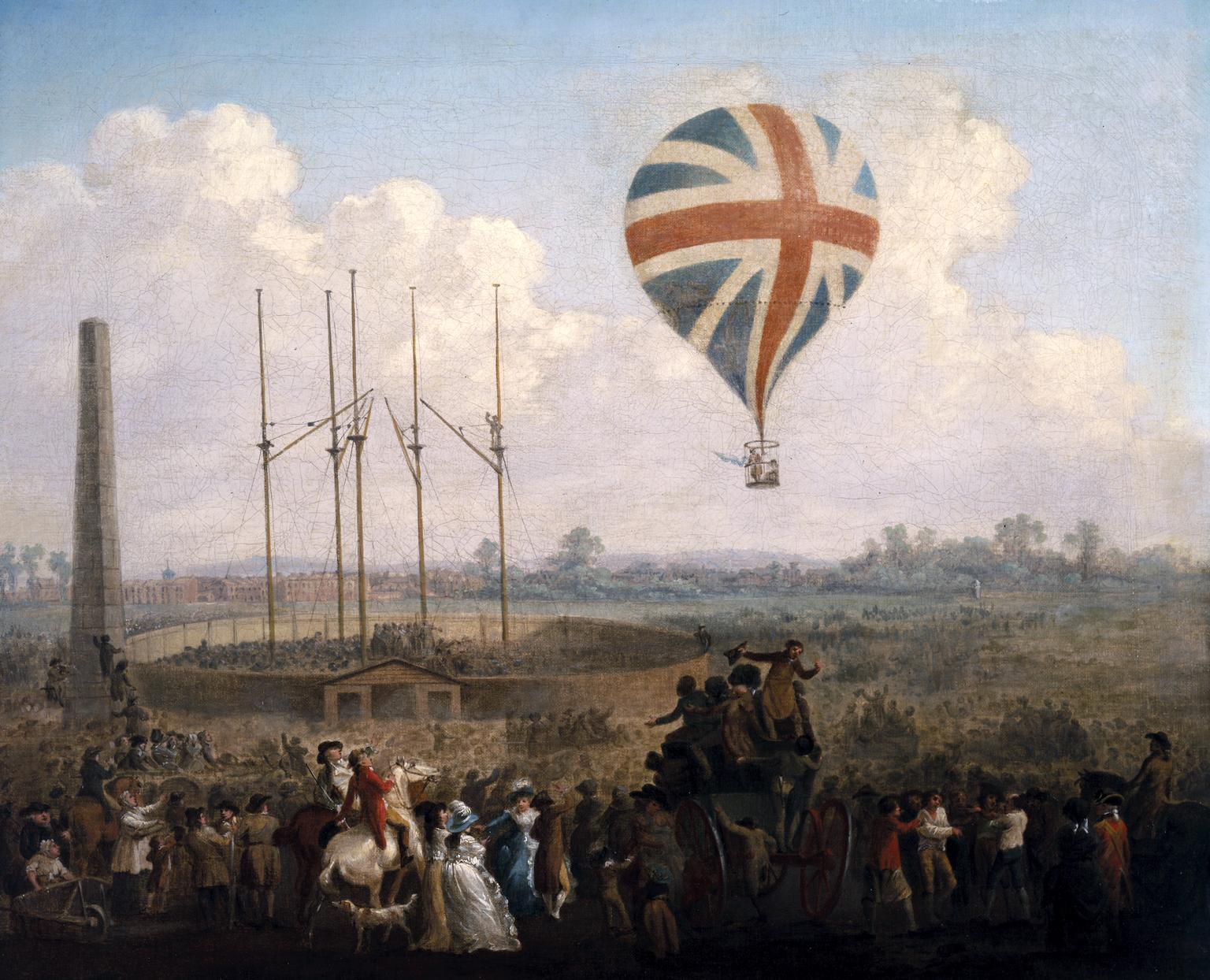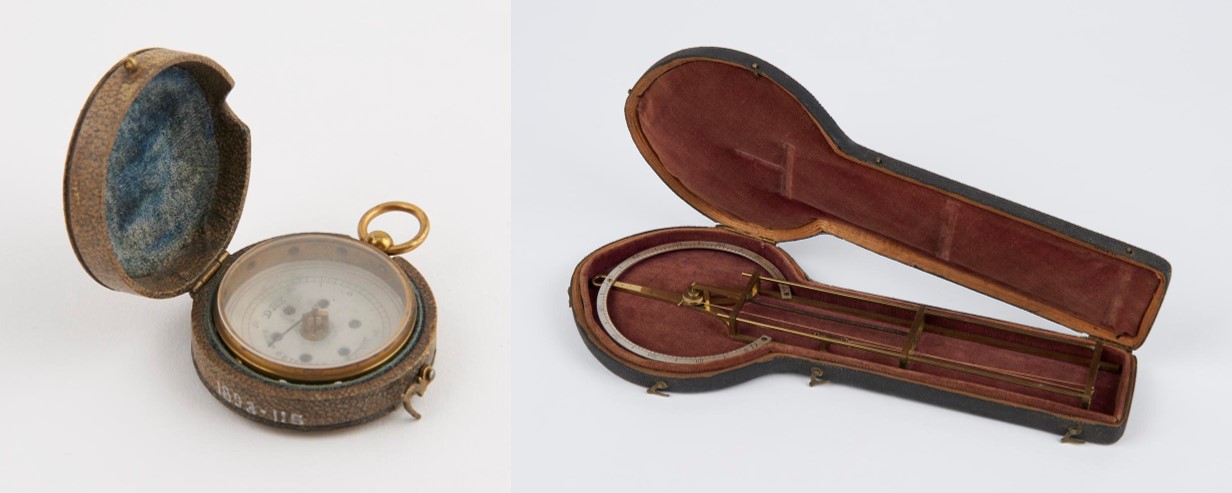Meet Letitia Ann Sage: an actress who, on this day in 1785, became the first English woman ever to take to the skies, in a hot air balloon. Although not the first woman in England to do so – the French sisters Rosine and Leonora Simonet had already made separate ascents with the balloonist Jean-Pierre Blanchard the month before – Sage was still among the pioneers. Indeed, the world’s first crewed, free-flying balloon flight had occurred less than two years earlier on 21 November 1783, when a balloon designed by the French Montgolfier brothers was launched in Paris.

Sage wrote (and later published) a remarkable account the day after her own exploit: A Letter, Addressed to a Female Friend. By Mrs. Sage, The First English Female Aerial Traveller. It makes for a highly entertaining read about the pleasures and indeed the perils faced by early balloonists.
Sage herself was very much aware of the ‘melancholy fate of poor Pilatre de Rozier’, who had become the first ballooning fatality only a fortnight earlier when his balloon caught fire and crashed. Still, Sage was not to be deterred, declaring that ‘I never had, since I first took up the idea, the least apprehension of danger’.
The launch site was St George’s Fields in Southwark, on the south side of London’s River Thames. A rotunda had been constructed around a stage and gantry from which the balloon was to ascend. The “pilot” was to be Vincenzo Lunardi, an Italian aeronaut who had already flown a balloon in September 1784 – with a cat, dog and pigeon for company!
Sage and Lunardi were also to be joined by one Colonel Hastings, another unidentified lady, and Lunardi’s assistant George Biggin armed not only with meteorological instruments but also a ‘manly and becoming fortitude’.

Unfortunately, the balloon was unable to launch with so many passengers – even after the unidentified lady had already disembarked. Sage’s own rather buxom figure may not have helped matters; tactfully describing herself as ‘en-bon-point’, she later referred more explicitly to her ‘two hundred pounds of human weight’.
Lunardi, perhaps forgetting that he was chiefly responsible for flying the balloon, gave up his own place for Colonel Hastings ‘with a polite liberality that did him credit’. In the end, though, it was only to be Sage and Biggin who took to the air, at about 13:25 with the crowd looking up ‘in fixed and extatic [sic] attention’.

After a shaky start during which, Sage tells us, the balloon actually started to descend rapidly towards the crowd, they ascended. She and Biggin were carried westward more-or-less above the Thames, taking in the views of Westminster Bridge, St James’ Park and Piccadilly, and ‘the beautiful appearance of Battersea Bridge’.
They even sat down to enjoy some ham, chicken, and a glass of Florence wine (evidently these “essentials” hadn’t been jettisoned in the efforts to lighten the balloon prior to launch), before tossing the bottle overboard.
Sage included meteorological readings in her account, periodically throwing pieces of paper into the air to help establish the direction of travel. Biggin also had a thermometer and hygrometer to measure temperature and humidity respectively. He would have had a barometer, too, had Sage not accidentally broken it earlier in the flight.
Still, there were other observations to make: he rang a small bell to see if there was any difference in sound (there wasn’t), and used an electrical conductor to investigate the electrical properties of a passing cloud. At one point they flew directly through cloud – Sage reporting that she ‘was very cold for above five minutes, and felt a little difficulty in respiration; but it was not an unpleasant sensation’ – and even through snow.

About an hour into the flight, the balloon turned north-north-west and eventually landed in a field near Harrow-on-the-Hill, well beyond London’s outskirts at the time. The landing was anything but smooth: such was the force of the wind that Sage struck and injured her foot against a piece of iron, and a man on the ground attempting to help proved ‘of no service, as he was laid flat on his face’. It took several more onlookers to help bring the balloon to a stop, but not before most of them had been dragged along behind it for a distance.
Even then, the excitement was not over. The master of the fields, whom Sage described as ‘one of those beings, who, though they bear the external marks of humanity, have very little of the real character in their soul’, became ‘abusive, and savage to a great degree’ when he saw the apparently ‘trifling injury done to his property’.
Thanks in large part to the arrival on the scene of the pupils and master of nearby Harrow School, the tension was diffused, and the balloon thus saved from destruction. Sage and Biggin then enjoyed an evening of local hospitality, ‘many flattering attentions’ and ‘rustic compliments’, before returning to London – this time, by land.

Early hot air ballooning certainly divided opinion. While some argued for its merits as a feat of aeronautical engineering and a tool for making scientific observations, others dismissed it as a frivolous pursuit ripe for satire in the press. The craze for “Balloonomania”, though, was tangible: flights were commemorated in paintings, prints, and medals, on fans, items of clothing, snuffboxes and tableware.
For herself, Letitia Ann Sage felt ‘more happy, and infinitely better pleased with my excursion, than I ever was at any former event of my life’. Evidently, her neighbours were equally captivated: ‘The door is never quiet a single instant’.
You can find out more about early ballooning ephemera by exploring the Science Museum’s Penn-Gaskell Collection online. And when our doors reopen, be sure to pay Mrs Sage a visit; her portrait is on permanent display in Science City 1550-1800: The Linbury Gallery.
